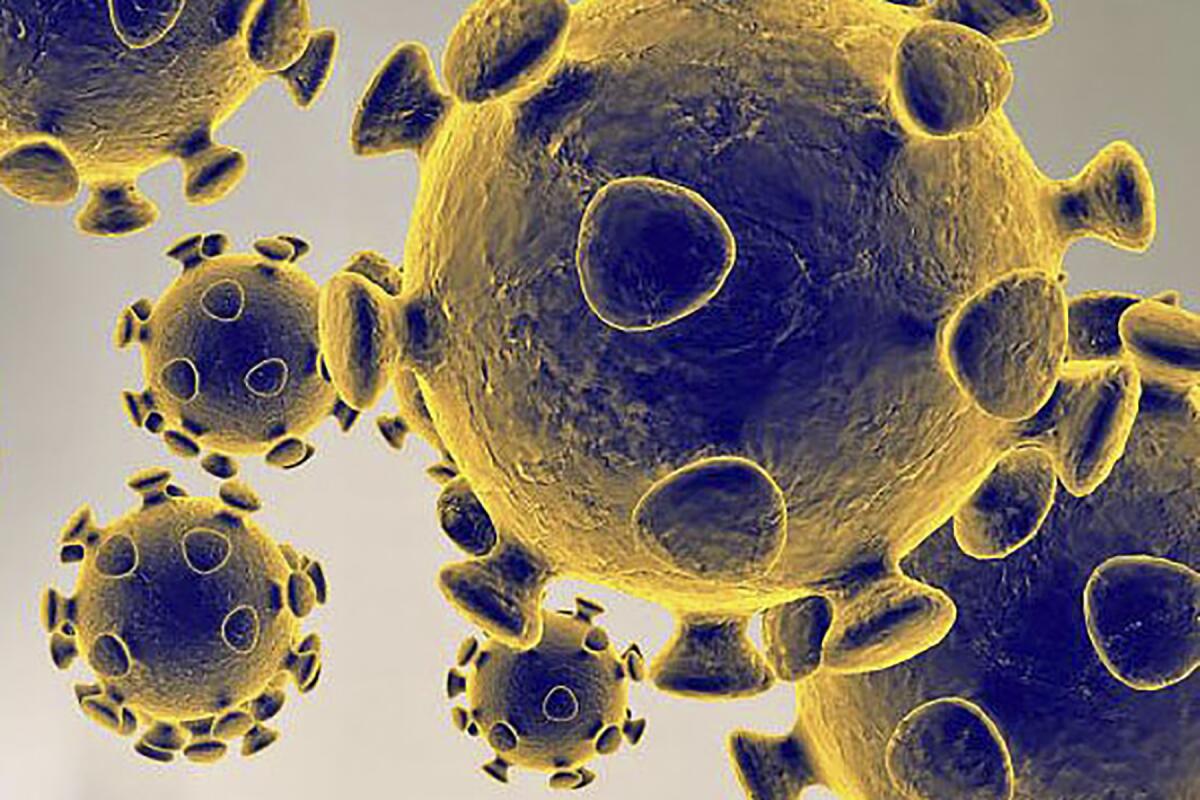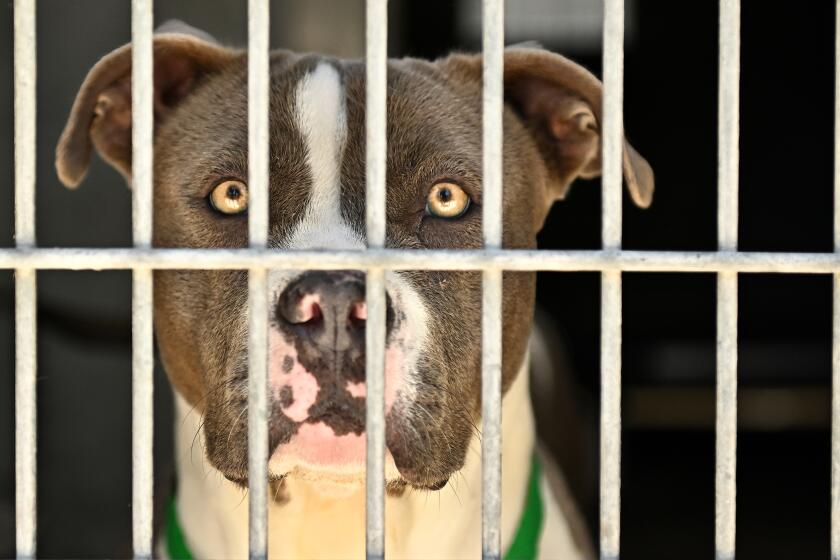Op-Ed: The pandemic isn’t over. Omicron won’t be the last coronavirus variant to haunt us

- Share via
Think back to late June 2021, when there was containment of the American COVID-19 pandemic with fewer than 12,000 new cases a day and a total of 15,000 patients in the hospital. There was a declaration of independence from the virus on July 4, just as the Delta variant was starting its exponential growth. A major surge ensued, which was followed by yet another one with the Omicron variant, peaking with nearly 160,000 people hospitalized and almost 2,700 deaths per day — the most deaths since vaccinations became widely available.
Even now, as we are descending from the Omicron wave, we still have more than 60,000 patients in the hospital and more than 2,000 deaths per day.
The SARS-CoV-2 virus is still with us and is adroit at finding new ways to infect us at scale. As it evolved from the original strain in late 2019, and progressed to the Alpha and Delta variants, it became more virulent and infectious, not less. There is a misconception that the virus is destined to evolve to a more benign form. If we’ve learned anything from the pandemic, it’s that the virus has an extraordinary ability to adapt — and it is unpredictable.
You can just look at the more than 50 new mutations present in Omicron to know there are seemingly infinite ways for it to further mutate and rearrange the 30,000 base pairs in its genome. Although we’d be fortunate for it to morph into a common cold coronavirus cousin, we certainly can’t count on that. There are just too many vulnerable hosts out there for more evolution of the virus to take place, including a wide variety of animals, with potential to spill over to humans.
There are more than 7 million Americans who are immunocompromised, who are not only highly vulnerable to infections, but also may provide an opportunity for the virus to evolve inside a person and then infect others. That path may indeed be the way Omicron was created and spread.
Around the world, there are billions of people unvaccinated and likely without any protection from prior infection. In the U.S., there are more than 19 million children under the age 5 for whom there is no vaccine approved, and tens of millions of people have not been vaccinated. We currently rank 67th in the world for being “fully vaccinated” and 54th for having its population get an all-important booster shot that preserves a high level of protection against hospitalizations and deaths. When the virus is not contained, as is the case in the world now, its spread creates the potential for new variants.
In these new hosts, the virus could possibly evolve to a new, more deleterious version that attaches better and infects other organs, like the heart or gastrointestinal tract, instead of the lungs. We have already seen people with simultaneous co-infections of two different variants, which enables the swapping of RNA between them and generating a hybrid, potentially worse version of the virus. That swap could also be between an animal and human source, akin to human and bird flu recombination.
The result would be much more difficult for humans to recognize, overriding protection from our spike-protein vaccines or infection-induced immunity. While unlikely, full immune escape by a new variant would put us back to square one of the pandemic.
Even if these scenarios don’t materialize, let’s remember that Omicron, despite being characterized as a milder form of the virus, can still be deadly for people without immunity. The original Omicron known as BA.1 has sister variants, including BA.2 and BA.3, each with many new and different mutations. A recent study in a lab using an animal model suggested that BA.2 is more disease-causing and more immune-evasive than BA.1.
BA.2 has spread rapidly in some countries such as Denmark, South Africa, India and Sweden. However, all the data to date for BA.2 in people do not support any sign of worse disease or lack of protection from vaccines. BA.2 is not gaining legs in the U.S., but the explanations for this and for the rapid decline of Omicron in many countries remain elusive. At this moment, it does not look like BA.2 poses a threat as a major new variant, but it would not be surprising if we see another variant in future months that deserves a separate Greek letter designation.
The good news is that we’re probably moving to a relatively quiescent phase, with low numbers of cases and limited severe disease, representing containment of the virus. That is not the same as the pandemic being over. Unfortunately, when states or countries proclaim that we just need to live with the virus and end all restrictions, many people interpret that message as meaning the pandemic is actually over — for good. That would be a fantasy given the myriad opportunities for the virus to haunt us in the months and years ahead.
We have been extraordinarily lucky to date — getting such highly effective vaccines into the arms of billions of people in a time frame that would never have been considered possible before. These vaccines, with boosters, have held up solidly, protecting vaccinated people against severe disease even though they are directed toward the original strain of the SARS-CoV-2 virus.
Let’s hope our luck does not run out. Getting prepared for worst-case scenarios is our best defense, with better genomic, wastewater and digital tracking of the virus, and bolstering protection with everything from better air filtration to accelerating efforts for a variant-proof, pan-coronavirus vaccine. Better to be smart against this formidable virus than lucky.
Eric J. Topol is a professor of molecular medicine at Scripps Research and author of the newsletter Ground Truths.
More to Read
A cure for the common opinion
Get thought-provoking perspectives with our weekly newsletter.
You may occasionally receive promotional content from the Los Angeles Times.










